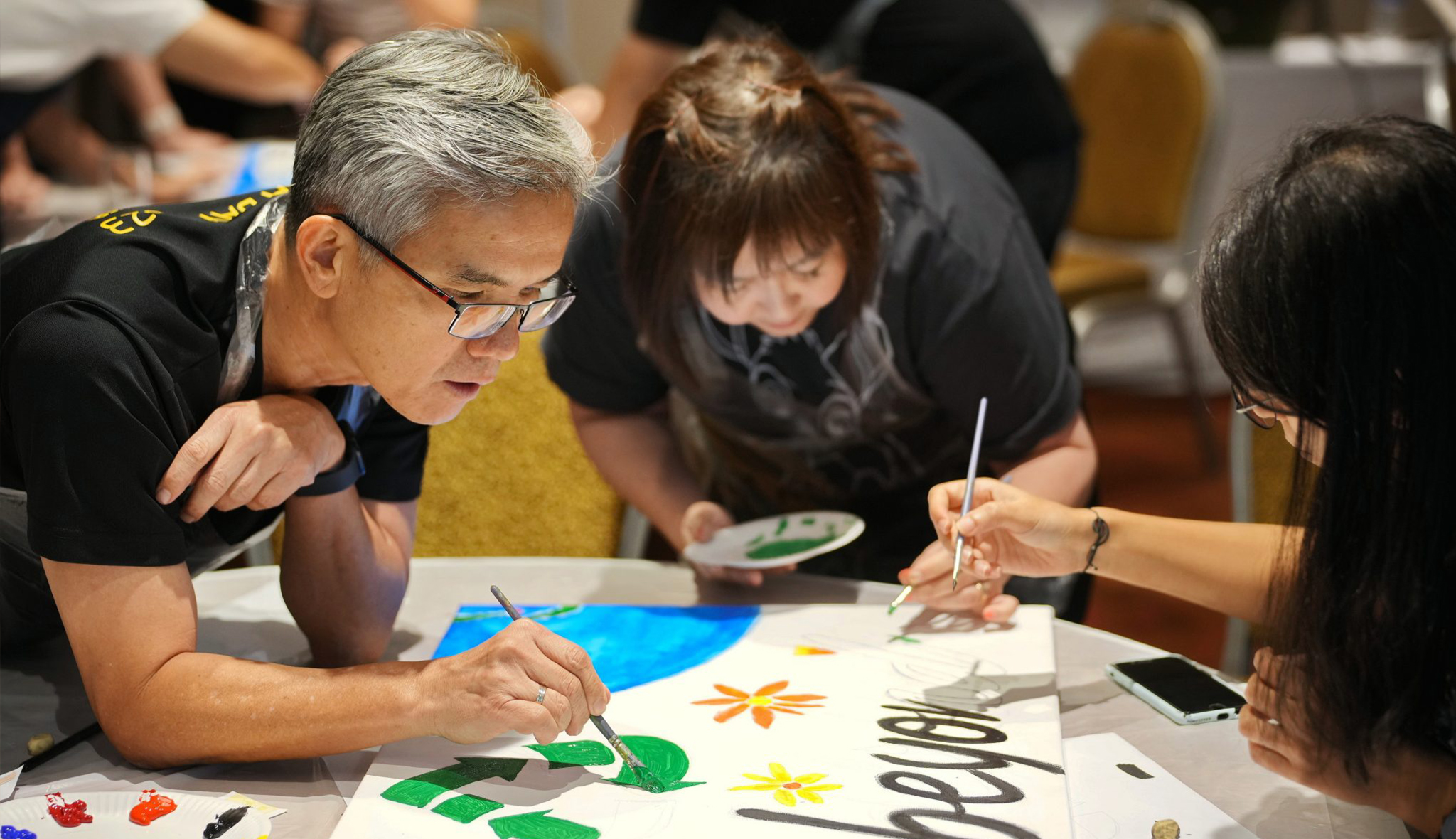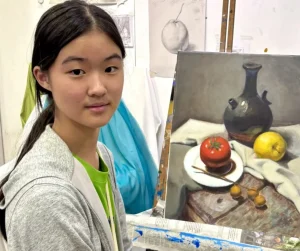Acrylic Painting on Canvas Team Bonding Art Jamming Singapore Visual Arts Centre

























Visual Arts Centre has trained and supported many students in their admission into art and design schools with the Portfolio Preparation Course (DSA) and Portfolio Preparation Course (Diploma & Higher Education). During the one year of intensive Art Portfolio Preparation Course, students undergo professional art training and develop professional art skills and techniques useful for their educational and professional endeavours. At the same time, students complete a full art portfolio as required for Direct School Admission – DSA-MOE / DSA-SOTA, which demonstrates the student’s artistic abilities and creativity.
An art portfolio consists of a series of artworks done by a student over a period of time and is usually presented during the art school admission process. Many art schools have clear instructions and requirements for the art portfolio, such as a set number of artworks and the style or subject of the works presented.
Visual Arts Centre has years of experience in helping students gain admission into art schools through DSA, and to art schools and universities locally and overseas. The Portfolio Preparation for DSA one year course prepares and coaches students in P5 to help them to get into their dream schools through the DSA-MOE or DSA-SOTA admission exercise. Those seeking a Diploma or Bachelor /Masters Degree in Fine Arts may enrol for the Portfolio Preparation for Diploma and Higher Education.
Many students have been successfully admitted to SOTA, NAFA, LASALLE and overseas universities through our Portfolio Preparation course and have received a strong art foundation and training which benefit them for life.
Find out more and embark on your art portfolio preparation journey today!







Drawing and sketching takes much practice and patience. When you sketch, you have to concentrate and focus on your work to produce the best outcome. This is especially so, when you are working on a life drawing and sketching piece. When sketching from life, you want to capture all the details of the object and the form in one sitting. Hence, while learning drawing and sketching, you will find yourself being able to focus and work on tasks for longer periods of time – therefore, allowing you to exercise your basic art skills at the same time.


Drawing and sketching takes much practice and patience. When you sketch, you have to concentrate and focus on your work to produce the best outcome. This is especially so, when you are working on a life drawing and sketching piece. When sketching from life, you want to capture all the details of the object and the form in one sitting. Hence, while learning drawing and sketching, you will find yourself being able to focus and work on tasks for longer periods of time – therefore, allowing you to exercise your basic art skills at the same time.

Following the end of the 48 sessions we us, you can expect to have at least grasp a basic understanding of the various mediums you have been exposed to throughout the sessions. How different techniques can be applied to a certain specific medium will also be shared to enable an exploratory process of how the artwork can be further enhanced.





|
||||||||||||||||||||||||||||||||||||||||||
|
||||||||||||||||||||||||||||||||||||||||||||||||||||||||||||||||||||||


SAT |
10:30am - 12:45pm1pm - 3pm
|
SAT |
|
10:30am - 12:45pm1pm - 3pm
|
|




Address:
10 Penang Road, #01-02 Dhoby Ghaut Green,
Singapore 238469
Exit from Dhoby Ghaut MRT Station Exit B and turn left, we are there in 30m!

Address:
AZ@Paya Lebar, 140 Paya Lebar Road, #03-04,
Singapore 409105
Exit from Macpherson MRT Station Exit A and turn left, we are right across the road, 1 minute walk away!
Have any questions? Please drop us an enquiry form and we’ll respond to you as soon as we can!
"*" indicates required fields
Click and get to our WhatsApp
Embark on a captivating journey into the vibrant world of digital art! Our Foundation in Digital Art workshop invites budding creatives aged nine and above to unleash their imagination and hone their artistic skills in a dynamic, supportive environment. From mastering basic digital tools to crafting mesmerizing digital masterpieces, children will explore a spectrum of techniques guided by seasoned mentors. Through hands-on activities and interactive sessions, participants will discover the endless possibilities of digital expression while fostering creativity and critical thinking. Join us for an exhilarating adventure where young artists transform ideas into stunning visual realities, igniting a passion for digital art
In the Batik Introduction Handkerchief Painting workshop, participants will learn the traditional art of batik, a wax-resist dyeing technique originating from Indonesia. The workshop begins with a brief history and overview of batik, highlighting its cultural significance and various techniques. Participants will then observe a demonstration of applying wax with tjanting tools and dyeing the fabric. Following the demonstration, each participant will design and create their own batik handkerchief, applying wax to create patterns and then dyeing their fabric. The workshop concludes with a group discussion, allowing participants to share their creations and reflect on their learning experience.